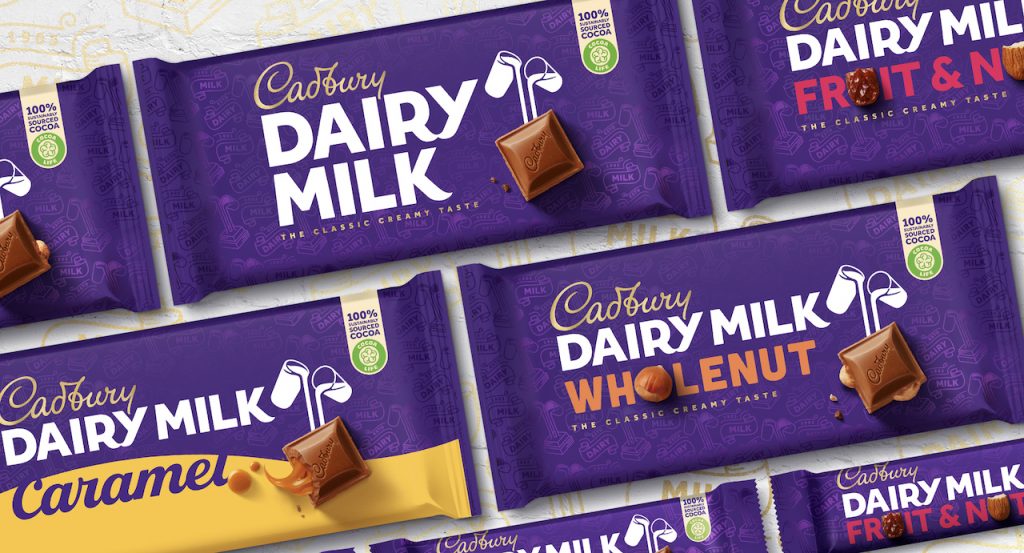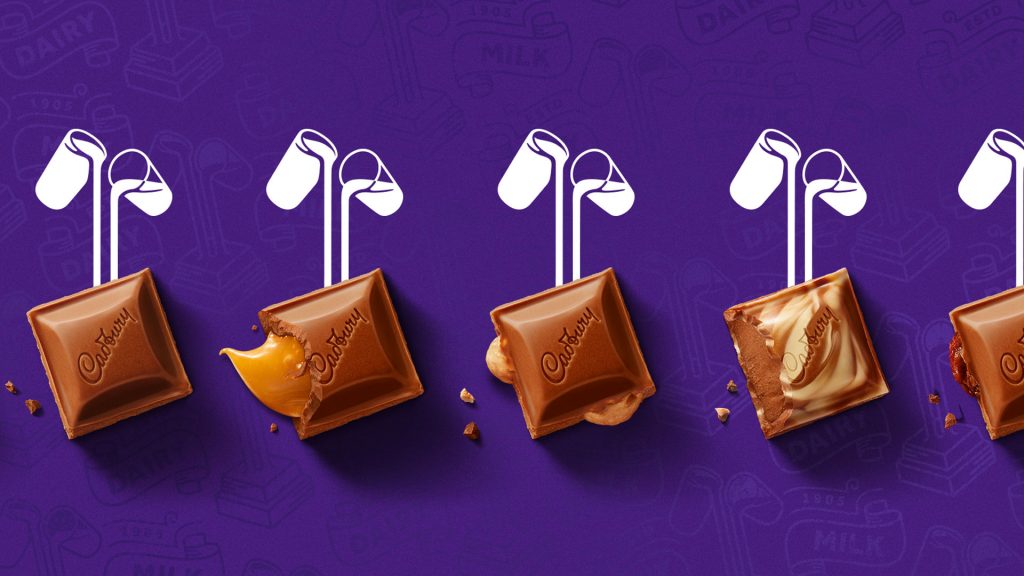The Marketing mix of Cadbury analyses the 4Ps of Cadbury, including the Product, Price, Place, and Promotions. The Cadbury marketing mix, with the help of Cadbury products, pricing strategy, distribution channel, strategy in both urban and rural areas, constant marketing campaigns, and a diverse range of innovative ideas and marketing tactics, has been successful in forming a worthy customer base in the target market.
A comprehensive marketing mix framework has helped the second largest confectionery brand in the world to create different marketing strategies to triumph over the nearest competitor and market leader, Nestle, as well as Mars and Ferrero.
Table of Contents
Introduction to Cadbury
# Cadbury
- Origin Country: United Kingdom
- Founder: John Cadbury
- Founded: 1824
- Headquarters: Uxbridge Business Park, Greater London, England
- Employees in 2023: 50,000
- Parent Company: Mondelez International (originally Kraft Foods)
The British company Cadbury is the second-largest confectionery brand in the world. The owner, Mondelez International (Kraft Foods), has made Cadbury silk, the chocolate brand, a household name synonymous with a sweet tooth and customer satisfaction in the chocolate industry.
Cadbury Chocolate Company started its journey selling drinking chocolate, coffee, and tea and later expanded to include the production of cocoa beans and chocolate bars. With time, the Cadbury brand has become one of the most popular brands in the chocolate industry.
Founded by John Cadbury, the chocolate brand was named “Britain’s Most Successful Exports” by The Daily Telegraph in 2013. The Cadbury House received its first royal warrant 1854 from Queen Victoria and Queen Elizabeth II from 1955 to 2022.
Cadbury Product Strategy

Cadbury, a prominent chocolate confectionery brand, offers a wide range of products that cater to different tastes and preferences.
The new Product Mix of Cadbury in 2023 is as follows (Source).
- Chocolate Bars and Blocks: Cadbury is renowned for its chocolate bars and blocks in various flavors and sizes. Classic products like Dairy Milk, Fruit & Nut, and Caramel are popular choices.
- Boxed Chocolates: The brand offers a selection of boxed chocolates, ideal for gifting purposes. Examples include Cadbury Roses and Cadbury Heroes and assortments of mini chocolate bars and sweets.
- Seasonal Confections: Cadbury produces seasonal items for holidays like Christmas, Easter, and Valentine’s Day. The most notable are their Easter Eggs and the famous Cadbury Creme Egg.
- Snack-Sized Treats: This category includes smaller, snack-sized versions of their famous chocolates, such as Cadbury Fingers, Mini Eggs, and Freddo Frogs, catering to casual snacking and portion control.
- Beverages: Cadbury also ventures into the beverage market with products like hot chocolate powder and drinking chocolate, providing an alternative way to enjoy their chocolate flavor.
- Biscuits and Cakes: Cadbury has expanded into biscuits and cakes in some markets, often combining their signature chocolate with these baked goods.
- Dairy Products: Cadbury has diversified into dairy products like ice cream and desserts in certain regions, incorporating their chocolate into these categories.
Cadbury’s product mix is designed to appeal to a broad consumer base, focusing on quality and innovation. They continuously develop new flavors and products while maintaining their classic offerings, ensuring they remain a key player in the confectionery market.
Cadbury Place Strategy
Cadbury’s marketing mix has considered the vision of the founder, John Cadbury, to create a place strategy focused on the global recognition of Cadbury, which offers the brand name amongst chocolate lovers worldwide. The different marketing strategies have made it possible to spread its operations to target markets in 50+ countries.
The Cadbury company has been divided into primary markets like Cadbury India, Cadbury Canada, Cadbury Australia etc. The production facilities in several countries like India, Poland, and the UK and a vast distribution network in all the regions have made it possible for the parent company to extend its product presence by selling chocolate to both urban and rural areas of all the regions.
Here’s the place strategy of Cadbury.
- Wide Retail Distribution: Cadbury products are widely available in various retail outlets, including supermarkets, convenience stores, and grocery stores. This extensive distribution ensures easy accessibility for consumers across diverse locations.
- Global Presence: The brand has established a significant global presence, with products sold in numerous countries worldwide. This international strategy enables Cadbury to tap into different markets and cater to various consumer tastes and preferences.
- E-Commerce Platforms: Embracing the digital age, Cadbury has a robust online presence, offering products through their websites and partnering with online retailers. This approach caters to the growing trend of online shopping and broadens its reach to consumers who prefer digital purchasing.
- Seasonal and Event-Based Placement: Cadbury strategically places its products in retail settings based on seasons and events (like Easter and Christmas), enhancing visibility and sales during critical periods. This approach maximizes the impact of their seasonal products like Cadbury Creme Eggs and themed chocolate boxes.
- Selective Specialty Stores: The brand also utilizes selective placement in specialty stores, such as candy shops and duty-free airport stores. This tactic targets niche markets and travelers, expanding their reach beyond conventional retail environments.
Cadbury Pricing Strategy
Cadbury’s pricing strategy is a critical element of its marketing mix, reflecting the brand’s understanding of its diverse consumer, huge customer base, and competitive market position. Here’s an overview of critical aspects of their pricing approach:
- Competitive Pricing: Cadbury employs competitive pricing to ensure its products are attractively positioned against rivals in the confectionery market. They carefully monitor competitors’ pricing to offer similar value, ensuring they remain a top choice for consumers.
- Psychological Pricing: The brand often uses psychological pricing tactics, like pricing products just below a round number (e.g., $0.99 instead of $1.00). This strategy makes the price seem lower than it is, encouraging impulse buys and increasing the perceived affordability.
- Product Line Pricing: Cadbury adopts product line pricing to create a perceived value difference between various products. For example, premium chocolates are priced higher than standard ones, offering consumers choices based on their willingness to pay for different quality levels.
- Promotional Pricing: The brand occasionally employs promotional pricing strategies, such as discounts, bundles, or special offers (like ‘buy one get one free’). These tactics are particularly prevalent during festive seasons or new product launches to boost sales and attract customers.
- Geographical Pricing: Understanding the economic diversity of its global market, Cadbury varies its pricing strategy based on geographical location. Prices may be adjusted to cater to different regions’ purchasing power and market conditions, ensuring broader accessibility and market penetration.
- Segmented Pricing: Cadbury uses segmented pricing for different types of products and packaging sizes. This approach allows customers with varying budgets and needs to find products within their price range, enhancing the brand’s appeal across different market segments.
Cadbury effectively balances consumer value perception and profitability through these two different pricing strategies, maintaining its position as a leading and accessible brand in the confectionery industry.
Cadbury Promotion Strategy

The Cadbury marketing mix has used an aggressive Cadbury promotion policy that involves a constant marketing campaign, direct marketing campaign, personal selling, and digital marketing campaign to maintain its brand identity, market share, and customer base. It faces stiff competition in the market and realizes how essential marketing campaigns can prove in the Cadbury promotion.
The Cadbury promotion and marketing campaign in Cadbury’s marketing strategy include the following.
Traditional Media Marketing Campaign
The Cadbury marketing mix has used the tried and tested traditional media for the constant marketing campaign of its products. The brand has created some of the best ad campaigns, like “Kuch Meetha Ho Jaaye,” for its products to connect with the customers. These ads are shown through radio, television channels, newspapers, magazines, hoardings, billboards, posters, etc.
Social Media Platforms
The brand realizes the importance of using social media platforms for its marketing campaign. The chocolate manufacturer uses several platforms to place and distribute strategies, such as Instagram, Twitter, Facebook, and YouTube.
Cadbury India likes to post videos and images of the chocolates and introduce new products and contests to keep the marketing campaign alive. The brand ensures interaction with its customers and answers their messages, as interactive initiatives like YouTube Cadbury India will increase the customer base.
Public Relations
Cadbury’s marketing mix uses PR activities, for instance, sponsored events like music festivals, to boost the company’s brand image and establish direct contact with the target audience of customers.
Sales Promotion
The brand offers coupons, online sales, and discounts to increase the customer base as part of the sales promotion marketing strategy. The marketing campaign called “Win a Vacation to Cadbury World” and “Buy One, Get One Free” are prime examples.
Tie-ups
Mondelez International and Hindustan Unilever Limited partnered to launch Kwality Walls Cornetto Oreo and Kwality Walls Cadbury Crackle Tub.
Some Recent Video ads and Print ads for Cadbury are:
https://youtu.be/Q4vMXvK6w4w
How does Cadbury continue to innovate in its marketing strategies?
In recent years, Cadbury has capitalized on the surge of digital marketing trends by integrating advanced data analytics to fine-tune its marketing strategies more effectively. According to a 2022 report by Statista, over 90% of global consumers utilize mobile devices, prompting Cadbury to invest significantly in mobile-based advertising campaigns. This approach not only engages tech-savvy consumers but also allows for more personalized marketing based on consumer behavior insights, maximizing engagement and conversion rates.
Cadbury’s successful marketing campaigns, such as the “Taste Like This Feels” campaign launched in the UK, exemplify how emotional storytelling and consumer nostalgia can significantly enhance brand connection. This campaign, praised for its evocative narrative, was reported by Marketing Week to boost Cadbury’s brand favorability by 8%. By focusing on the emotional aspects of consuming chocolate, Cadbury not only drives immediate sales but also strengthens long-term brand loyalty among its consumers.
Liked this post? Check out the complete series on Marketing Mix
I think you should be much more specific in each column
People, Process n Physical Evidence are not mentioned in it.
It is a product. People process and physical evidence are generally applied to services.